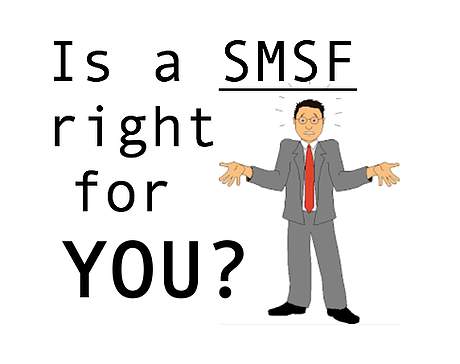
Holding property in your own superannuation fund is not for everyone but can be well worth considering for the tax benefits and asset protection advantages. This blog is food for thought to prepare you for a discussion with your Accountant, make sure you have that discussion before you sign a contract.
I make clients who are setting up a self-managed superannuation fund (SMSF) promise that they will not whinge about any part of the process for at least 6 months! It usually takes that long to bed it down and get them comfortable with the routine.
The Bank
Borrowing to buy a property in a SMSF just makes the process that much more arduous. In fact, the very first step should be to find the bank you want to deal with.
To borrow to buy a property in a SMSF you need to have a bare trust to hold the property separate from the other SMSF assets. This is sometimes called the security trust. You will need to have this set up before you can sign a contract to buy the property and of course you need to have the SMSF set up before this. Some banks want you to use their bare trust deed, and some will charge you to have their solicitors review your bare trust deed if you have your own. The firms that prepare bare trust deeds do their best to make sure their deeds are acceptable to all banks. Banks change their policies on a whim and you don’t want to risk them charging you to review your deed so it is simpler to just choose your bank first and buy their approved deed.
So, what is important when choosing a bank? You want one that will allow you to have an offset account. One of the draw backs of investing through superannuation is that you cannot borrow against the increased equity in your property to finance a deposit for the next one and the banks are very particular about sound deposits when it comes to SMSF lending. The best (lowest) you can expect is 20%. This means you will probably have to save for a few years to buy your next property. In the mean-time you want to get the best return you can on this cash and that is probably going to be through an offset account. If you instead pay down the loan you will not be allowed to redraw for the deposit; that is one of the quirks about SMSFs.
The next important factor in choosing a bank is the interest rate. SMSF loans are more expensive than other loans and this extra cost is a big factor in deciding whether a SMSF is the way to go. Also expect quite a few thousand dollars in set up costs. This is part of the reason there is much whinging along the way, unless the ground rules are set from the start. But the biggest factor in the whinging is the sheer time and complication involved. From getting your employer onboard, dancing through the banks hoops and keeping the seller happy.
The Upside
So why would you go through all this? Well the tax advantages are huge. Only 10% CGT at worse case scenario, that is if you sell before you retire and reach 60 years of age. If you sell in retirement phase the CGT is zero, even for the gain before retirement. Note to intending property moguls, you are limited in the value of assets you can hold in retirement phase.
The maximum tax you will pay on the funds earnings is 15% and zero in retirement phase. If you haven’t tried to avoid your creditors, by making extra superannuation contributions, the bankruptcy trustee can’t touch your superannuation. It’s just about everything on your wish list and it is not bad on estate planning either but that is another story.
If the property is negatively geared the tax outcome, assuming you are not fully utilising your superannuation contributions cap is very similar to owning a property in your own name. This is best explained by way of an example. Assume you have a rental property that is making a $10,000 loss and your taxable income is $100,000 a year.
| Hold Property in SMSF | Hold Property in your Own Name | ||
| Taxable Income | $100,000 | Taxable Income | $100,000 |
| Less Superannuation Contribution | $10,000 | Less Rental Property Loss | $10,000 |
| Net Taxable Income | $90,000 | Net Taxable Income | $90,000 |
It is simply a question of whether you claim a tax deduction for the loss on the property or a superannuation contribution, providing you can keep all your concessional contributions
(those either you or your employer claim a tax deduction for) under $25,000. By the way, contributions tax is a misnomer. The tax is not on the contributions but on the profit of the SMSF, so if there is a $10,000 loss from the property in the SMSF this will offset your $10,000 contribution, no contribution tax is paid.
If you are relying on your employer’s superannuation guarantee contribution to offset the loss on the rental property it is important that your employer pays that contribution into your SMSF with no detour via the fund they normally contribute to, as the contribution will be taxed or offset against the losses of the first superannuation fund it hits.
Young Investors
It would be unusual for young investors just starting out to invest through a SMSF due to the obvious issue of not being able to access the funds in superannuation until you satisfy a condition of release such as permanently unable to work or reaching retirement age. A young person would be unwise to store all their wealth away in superannuation. Life is pretty uncertain and it is very hard to get your hands on the money. Even the hardship provisions are to be avoided as they come with heavy tax penalties.
With the Senior Australian Tax Offset a couple who have reached pension age are currently allowed with perfect planning, $57,948 combined income tax free, outside of superannuation. So, having a few properties outside of superannuation, that you accumulated at the start of your investing career, is probably not going to cost you tax in retirement anyway, unless you sell them of course, then after all those years the CGT would be huge.
A major negative for a SMSF when you are young and just starting out is that SMSFs are not allowed to use the equity/capital growth they have in a property as security for a deposit towards buying another one. Generally, when investors start out they are waiting impatiently for capital growth so they can go back to the bank and buy another property, which of course they just can’t do through a SMSF.
Older Investors
The more financially secure you are and the older you are the better. As you age your life becomes more predictable, you have an idea of your family size and future education costs. If all has gone well you probably have plenty of equity to offer a bank as security. In fact, you may well find yourself in a position that the banks are prepared to lend you more money than you could sleep nights while owing. In other words, you don’t mind losing the leverage of buying properties through superannuation. You probably already have a fair bit stashed away in your employment superannuation fund that you can rollover into your SMSF for the deposits and you can see the light at the end of the tunnel.
Once you get past preservation age, currently 57, superannuation is now nearly as good as assets you hold outside of superannuation. Assuming you have some liquid assets outside of superannuation you would probably only want to access your superannuation if you could no longer work. If you are over 57 and no longer working you can access your superannuation, probably tax free and maybe even while accessing a disability pension.
If You Are Going To Use The Property Don’t Buy It In A SMSF
If you, your family or your associates use a property owned by your SMSF for private purposes the SMSF will be forced to sell it. It is not even acceptable to pay market rent or only use it overnight. Any private use of the property will breach the sole purpose test that requires the SMSFs assets to only be used for the provision of the members’ retirement or their family in the event of their death. Further, any private use of the property will change it to an inhouse asset, permanently. A SMSF can only hold 5% of its assets inhouse. The total value of the asset is taken into account, no apportionment for the small percentage you have used. The ATO even has the power to deem an asset to be inhouse so there is no room to push the letter of the law here. If you breach the sole purpose test or inhouse asset rules your SMSF will be forced to sell the property, a very expensive mistake. Your SMSF has to be audited every year so slipping under the radar is not an option.
Summary
The tax advantages and asset protection of a SMSFs are the very best. The lack of access, leverage and extra costs such as a higher interest rate, annual SMSF audit and trust deeds do take a lot of the shine off them. It is certainly not a case of one size fits all but many of the disadvantages reduce as your wealth increases and you are closer to retirement age.
 Julia's Blog
Julia's Blog